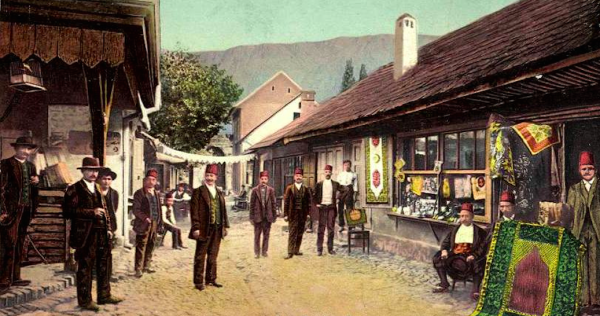Paul Takes the Form of a Mortal Girl is a cross-over novel. Not only in the sense that its protagonist, Paul, shifts continually between sexes and genders depending on what he considers the most exciting, or expedient. But also in that Lawlor originally published the book in 2017 via an independent outlet, Rescue Press. Its popularity with critics and readers alike has led a larger publisher, Vintage, to reissue it in Lawlor’s native United States, and Picador to publish it in the United Kingdom. Together with Confessions of the Fox, which – written by Lawlor’s friend Jordy Rosenberg – reimagines the eighteenth-century English thief, jailbreaker and folk hero Jack Sheppard as a trans man – it has become one of the first novels by a trans or non-binary author to move outside smaller presses. Does this mark the point when fiction by and about (if not exclusively for) trans and non-binary people – a genre that has not existed for very long, but which draws on a long line of autobiographical and theoretical writing – breaks into the literary mainstream? Might bringing such trans and non-binary perspectives and discourses to an audience help to change the way in which authors more widely think about gender?
Like Confessions of the Fox, Paul Takes the Form of a Mortal Girl is set in the past. Lawlor’s is a recent past, though, and one in which trans authors were still finding their voices: the early 1990s. In an influential text first published in 1987, The Empire Strikes Back: A Post-Transsexual Manifesto, trans theorist and artist Sandy Stone argued that since Lili Elbe’s Man into Woman was published in 1933, transition memoirs had failed to adequately explore the physical, psychological or social space in between ‘male’ and ‘female’. In this void, Stone argued, transphobic feminists have been able to dominate the narrative about transsexual people’s conceptions of gender expression and motives for transitioning, and the medical and social structures through which trans identities were constituted. In response, Stone asked trans and non-binary authors to write not just more honestly but also more inventively about their experiences. Seeing themselves as inscribed bodies, whose very existence disrupted established notions of sex and gender would, in turn, help them to create new textual genres to narrate their lives.
Stone did not mention fiction; at that point, there had been little published by trans or non-binary authors. Most of those who took up Stone’s demand over the following decade mixed genres in their quest for what American author, performance artist and playwright Kate Bornstein called, in her influential text Gender Outlaw: On Men, Women and the Rest of Us (1994), ‘a transgendered writing style’. Sticking mainly to non-fiction, these authors combined autobiographical material with reflections on gay and lesbian activism, second and third-wave feminist theory, as well as the representation of trans people in the media. They did so to directly challenge widespread transphobia, publishing works that talked about how discrimination manifested itself in media and culture, employment and (the lack of) public safety, interpersonal relationships and other parts of everyday life. One notable exception was Leslie Feinberg’s Stone Butch Blues (1993) – subtitled ‘A Novel’ to state that the book complicated this category. Feinberg said in an interview that loosely fictionalising hir life story (and deliberately choosing a ‘bad’ pseudonym, ‘Jess Goldberg’, for the central character) allowed hir to ‘be more brutally honest’ about the challenges faced by gender non-conforming people in the United States around the time of the Stonewall riots in 1969 – when Stone Butch Blues is set – than ‘if I were telling my own story.’ Beyond this, this wave of authors used their writing to challenge transphobia and to build community, dealing directly with social and political issues. This left a gap that has only recently begun to be filled: Topside Press was established in New York in 2013 with the aim of publishing works by trans authors, having early successes with Imogen Binnie’s road-trip novel Nevada (2013) and Casey Plett’s volume of short stories, A Safe Girl to Love (2014). Meanwhile, British author Roz Kaveney’s semi-autobiographical Tiny Pieces of Skills, rejected by publishers in 1988, finally reached print in 2015 through Team Angelica, a London-based independent press dedicated to LGBT-themed works.
Written over a fifteen-year period, Paul Takes the Form of a Mortal Girl gestures towards this Nineties gap. Adopting a similarly conversational tone to Bornstein, Feinberg and others, it uses a clearly fictional form to answer Stone’s call for writing that creates new genders, if not genres. Its protagonist, Paul Polydoris, is a young bartender at the only gay club in Iowa City in 1993, who studies queer theory and film (where he reads Derrida and Foucault but not Bornstein or Feinberg, although Judith Butler almost inevitably pops up), makes zines, and has a ‘dyke best friend’. His world is, in many ways, a Nineties update of Goldberg’s in Stone Butch Blues. Lawlor sets it up with a similar vivacity, introducing bars with ‘five or six dykes with chains on their plaid pants, tattoos on every surface, fucked-up hair’, grunge bands playing whose lyrics reference Maya Deren, the mostly female gig-goers staying up all night and having sex in dingy toilets.
Paul spends a lot of his time dating and fucking, practices that are both complicated by his secret ability to transform his body, instantaneously, through sheer force of will. (How this power works is not something that is documented in any detail, though it is something that Paul appears to use relatively casually.) Over time, Paul’s brief relationships and sexual encounters as a gay man and a lesbian aggregate into a complex history. Notably, Lawlor resists assimilating Paul – who is often called Polly by his friends and lovers – into a ‘normal’ (that is, straight) context. Rather, Paul only feels comfortable around people who like being queer. That subculture is the novel’s world – a world that consists of gay and lesbian bars, BDSM clubs, women-only festivals, Riot Grrl bands and zines, and Film Studies classes that focus on underground queer filmmakers like Kenneth Anger. All this differentiates Paul Takes the Form of a Mortal Girl from the transition memoirs Stone critiqued, which often followed a male-to-female person through a process of coming out as transsexual, and then the struggle of trying to retain a stake in bourgeois society. Such conventions appear to only flicker on the edges of Paul’s consciousness, as he detourns ACT UP’s slogan about silence into ‘Heterosexuality = marriage = death’.
Paul Takes the Form of a Mortal Girl is fun, and frequently hilarious. Those familiar with academic cultures will appreciate Paul’s ranking of his professors’ stylishness by discipline and area of historical interest, where he concludes (correctly, I would say) that ‘Marxists and queers in any period always shot to the top’. The brief gag about Paul reading Michel Foucault‘s Discipline and Punish in a BDSM club feels a touch predictable; the line about him wanting to be a classy submissive ‘like Genet or Violette Leduc’, meanwhile, comes as an amusing surprise. At the same time, Lawlor’s prose is full of subtle asides about how gender is performed, such as Paul’s self-assured observation that ‘pretty girls were always doing stuff to look less pretty’, and his eventual failure to become a convincing drag queen when trying to find a way to earn money provides an intelligent plot twist. For all his lengthy analysis of songs that ‘fuck with gender’, fucking with gender in a more typically queer way – that fans of, let’s say, Ru Paul’s Drag Race might recognise – proves beyond him, because his constant shape-shifting means that he has not learned the high-camp stylings of drag performance, but instead has found a more restrained gender expression that will allow him to ‘pass’ as a woman.
Though Lawlor’s novel is not overt in its formal experimentation (besides the incorporation of a few fairy tale asides into its chapters), it is written in a way that short-circuits not just the established transition narrative, but also the need that many trans and non-binary people feel to clarify their identities, and have them understood by others. Although the narrator uses male pronouns for Paul throughout, rather than gender-neutral ones, his gender identity is never fully clarified. His feeling that he ‘belong[s] in all the genders’ is crucial to the plot from its outset; the narrator casts him ‘with all the other girls’ even when he presents as male. His ability to change his body on a whim, rather than through the lengthy Gender Identity Clinic process, frees Lawlor from the linear conventions of transition narratives; it also moves Paul beyond the question of ‘passing’ as a woman in order to avoid transphobic violence. Instead, choosing clothing becomes something more positive, and more enjoyable: a matter of ‘the story he was telling’ on a night out – that is, who he hopes to attract. ‘Passing’ becomes something playful rather than repressive, as Paul watches the women he finds desirable and enjoys the process of becoming more like them, shifting between gay male subcultures and lesbian ones with relative ease.
As the novel progresses however, it becomes clear that while these transformations are socially complex, requiring that Paul keep two sets of gender norms afloat in his mind, the physical mutations aren’t so simple either. Maintaining his ‘girl body’ for long periods of time proves to be exhausting, and still incurs anxiety over ‘passing’. When he attends the notoriously trans-exclusionary Michigan Womyn’s Festival – in infatuated pursuit of animal rights activist and committed lesbian Diane – he spends much of his time worrying about being exposed, even at the same time as he feels himself to have been ‘victorious over his erstwhile penis’. When they do finally get together, Diane worries that Paul/Polly will eventually tire of being a girl and change back. Their relationship falters as a result: the very power that removes the issue of Paul’s body being read differently to his gender presentation, it turns out, creates just as many problems as it solves.
Lawlor’s is a queer novel as much as it is a trans one, and Paul’s experiences are shaped by his experience of homophobia as much as they are by prejudice against gender non-conformity. Paul is aware, though, that such distinctions hold little meaning for their oppressors or, as he bluntly puts it: ‘They don’t worry about alienating us when they’re beating the crap out of some baby drag queen.’ Why be polite to straight society, Paul suggests, when it will never be reciprocated – a point Lawlor reinforces with a subtle reference to a headline about a ‘Woman Who Posed As a Man … Found Slain With 2 Others’, whom readers may recognise as Brandon Teena, raped and murdered in Nebraska in December 1993 after being outed as a trans man. In addition to the ongoing violence perpetrated by those Bornstein terms ‘gender defenders’, the spectre of HIV/AIDS haunts the novel. Lawlor quietly hints towards it when an important person from Paul’s past dies, and deals with the way people at the time often felt unable to speak honestly about this cause of death by presenting a list of Paul’s memories about his deceased ex. Meanwhile Paul reflects on how his youth offers some ‘protection from what the older guys, those memorial-weary men in their twenties, thirties, forties, what they were losing’.
One of Paul’s most intelligent conclusions is about how becoming cool requires work, and is ‘relational and conceptual’, making it a more meritocratic aspiration than being attractive. Paul’s preference for people who make the effort to be cool (especially if they do not always flaunt it) over the ‘aristocracy of genetics’ is expressed near the end of a novel that is full of sex, in a way that most trans memoirs are not. (An obvious exception is Kate Bornstein’s Queer and Pleasant Danger, published in 2012, which is full of graphic descriptions of sadomasochistic encounters, and which also subverts the conventions of such memoirs, which had become quite unfashionable amongst trans writers, by focusing on Bornstein’s life before and after her time with the Church of Scientology rather than before and after transition.) By telling a story about how unconventionally gendered bodies have sex through a shape-shifting protagonist, Lawlor avoids any prurience or sensationalism about trans or non-binary bodies, while also threading the difficulties of learning and re-learning codes of sexual attraction throughout the plot. In this, the novel feels as much like a worthy, contemporary response to Virginia Woolf’s Orlando (1928) as it does to Sandy Stone’s manifesto: Lawlor manages to find an intriguing middle-ground between Woolf’s playful modernism and the perhaps more realistic, observational approaches of Binnie, Plett and Kaveney. How much space the novel opens up for trans and non-binary writers remains to be seen, let alone how far such writers might, in the future, come to influence the ways in which cisgender authors write about gender identity and sexuality. But, it feels like it could herald a new wave of trans and non-binary writing – one which engages with the transition memoir and transgender theory but also thinks about how the use of characters who move beyond the old categories of ‘male’ and ‘female’ might reshape established literary genres.




